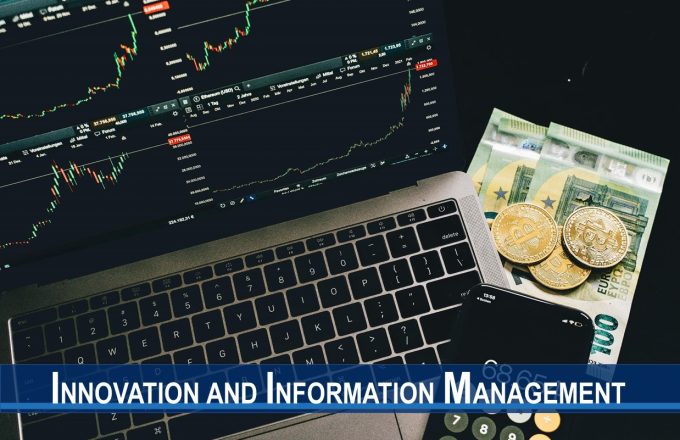Credit default swaps (CDSs) are a major financial innovation related to debt contracting. Because CDS markets facilitate bad news being incorporated into equity prices via cross-market information spillover, CDS availability may curb firms’ information hoarding. We find that CDS trading on a firm’s debt reduces the future stock price crash risk. This effect is stronger in active CDS markets, when the main lenders are CDS market dealers with securities trading subsidiaries, or when managers have more motivation to hoard information. Our findings suggest that debt market financial innovations curtail the negative equity market effects of firms withholding bad news.
March 2024
Journal of Financial and Quantitative Analysis
We study the impact of an urban land titling program on firm investment in Shenzhen, China. We find that this program increased the investment rate for titling firms, but this positive effect only holds for politically connected firms. Further analysis suggests that the titling effect is more pronounced for those titling firms associated with greater expropriation risk. During program implementation, the connected titling firms increased their investment perhaps because, as observed, they experienced fewer disputes than non-connected titling firms.
March 2024
Review of Finance
Becker and Murphy proposed that task specialization raises productivity but is limited by the costs of coordinating workers. We propose that automation enables workers to specialize without coordination costs. To the extent that the cost of effort exhibits increasing differences, workers increase effort in nonautomated tasks and productivity. The proposition is supported by a field experiment among supermarket cashiers. Conventionally, supermarket cashiers perform two tasks: scanning purchases and collecting payment. Cashiers exhibited increasing differences in the cost of effort: when they scanned faster, they took longer to collect payments. We rotated cashiers between the conventional job design and one in which they specialized in scanning. The new job design increased cashier productivity in scanning by more than 10%. The faster scanning was not due to customer sorting or cashier learning. The proposition is also validated by a survey of taxi drivers. Drivers who reported that difficulties in finding their way affected their driving were more likely to use map apps.
March 2024
Management Science
We examine the effect of the common ownership relation between brokerage houses and the firms covered by their analysts (referred to as co-owned brokerage houses, co-owned firms, and connected analysts, respectively) on analyst forecast performance. Common ownership can help the connected analysts have better access to co-owned firms, leading to higher-quality analyst research. However, common owners have incentives for higher valuation of the co-owned firms and thus can exert pressure on the connected analysts to issue optimistically biased research reports for these firms. We find that common ownership improves analyst forecast accuracy. This result is robust to a difference-in-differences design that exploits exogenous shocks to common ownership. The effects vary systematically with the quality of alternative sources of information that analysts can access for the co-owned firms. Overall, our paper contributes to the literature by documenting that common ownership can facilitate information communication.
March 2024
European Accounting Review
We conducted a nationwide field experiment in China to evaluate the direct and indirect impacts of assigning firms to public or private citizen appeals when they violate pollution standards. There are three main findings. First, public appeals to the regulator through social media substantially reduce violations and pollution emissions, while private appeals cause more modest environmental improvements. Second, public appeals appear to tilt regulators' focus away from facilitating economic growth and toward avoiding pollution-induced public unrest. Third, pollution reductions by treated firms are not offset by control firms, based on randomly varying the proportion of treated firms at the prefecture level.
March 2024
American Economic Review
Although in-feed advertising is popular on mainstream platforms, academic research on it is limited. Platforms typically deliver organic content through two methods: subscription by users or recommendation by artificial intelligence. However, little is known about the ad performance between these two channels. This research examines how the performance of in-feed ads, in terms of click-through rates and conversion rates, differs between subscription and recommendation channels and whether these effects are mediated by ad intrusiveness and moderated by ad attributes. Two ad attributes are investigated: ad appeal (informational vs. emotional) and ad link (direct vs. indirect). Study 1 finds that the recommendation channel generates higher click-through rates but lower conversion rates than the subscription channel, and these effects are amplified by informational ad appeal and direct ad links. Study 2 explores channel differences, revealing that the recommendation channel yields less source credibility and content control, reducing consumer engagement with organic content. Studies 3 and 4 validate the mediating role of ad intrusiveness and rule out ad recognition as an alternative explanation. Study 5 uses eye-tracking technology to show that the recommendation channel has lower content engagement, lower ad intrusiveness, and greater ad interest.
March 2024
Journal of Marketing
In canonical models of investment dynamics under uncertainty, “time-to-build” in investment decisions implies that uncertainty negatively impacts firm values and aggregate capital productivity. However, capital budgeting, which involves ex-ante information acquisition and state-contingent investment decisions, can potentially ameliorate time-to-build frictions. Reduced-form evidence using firm-level data on sales and investment expectations and errors supports both mechanisms. Incorporating capital budgeting into a standard investment model, our calibrated model reveals that state-contingent investment planning and information acquisition reduce aggregate productivity losses by 41% and 17%, respectively. Moreover, gains from planning accrue primarily to less productive firms, while information acquisition benefits higher productivity ones.
March 2024
Journal of Financial Economics
Theory offers two diverging views on the effects of ex ante litigation risk on corporate liquidity proxied by cash holdings. Ex ante litigation risk, however, is difficult to measure. We test the liquidity effects of ex ante litigation risk by exploiting the phase-by-phase introduction of securities class actions (SCAs) in Korea. Following the increase in litigation risk, firms significantly increase their internal liquidity, especially those without directors’ and officers’ liability insurance and those that are financially constrained. The results hold robustly in difference-in-differences and regression discontinuity designs. We also find that the increase in ex ante SCA risk improves firms’ stock market liquidity and valuation, especially for firms that do not carry liability insurance. Taken together, the results are consistent with the arguments that SCAs increase firms’ liability risk and lower investors’ risk.
February 2024
Journal of Law and Economics
Volatility forecasting is crucial to risk management and portfolio construction. One particular challenge of assessing volatility forecasts is how to construct a robust proxy for the unknown true volatility. In this work, we show that the empirical loss comparison between two volatility predictors hinges on the deviation of the volatility proxy from the true volatility. We then establish non-asymptotic deviation bounds for three robust volatility proxies, two of which are based on clipped data, and the third of which is based on exponentially weighted Huber loss minimization. In particular, in order for the Huber approach to adapt to non-stationary financial returns, we propose to solve a tuning-free weighted Huber loss minimization problem to jointly estimate the volatility and the optimal robustification parameter at each time point. We then inflate this robustification parameter and use it to update the volatility proxy to achieve optimal balance between the bias and variance of the global empirical loss. We also extend this Huber method to construct volatility predictors. Finally, we exploit the proposed robust volatility proxy to compare different volatility predictors on the Bitcoin market data and calibrated synthetic data. It turns out that when the sample size is limited, applying the robust volatility proxy gives more consistent and stable evaluation of volatility forecasts.
February 2024
Journal of Econometrics

























